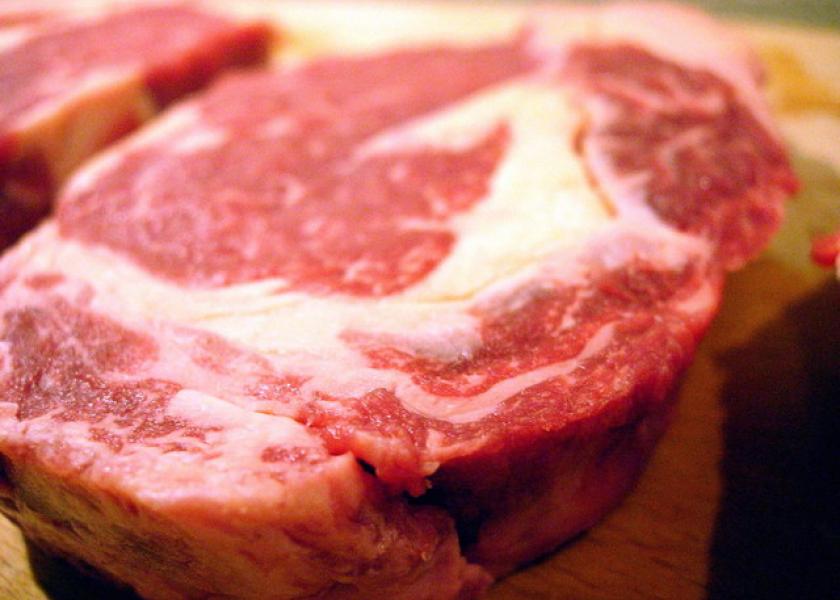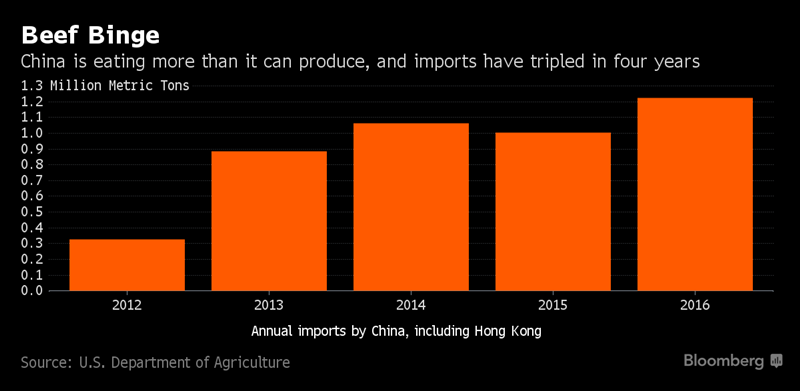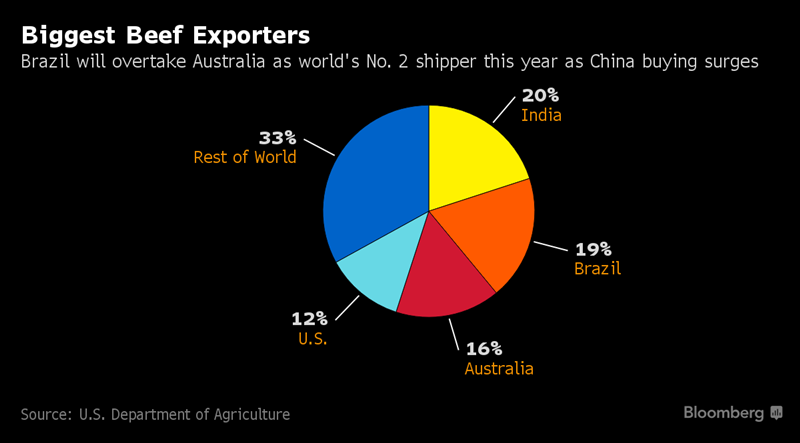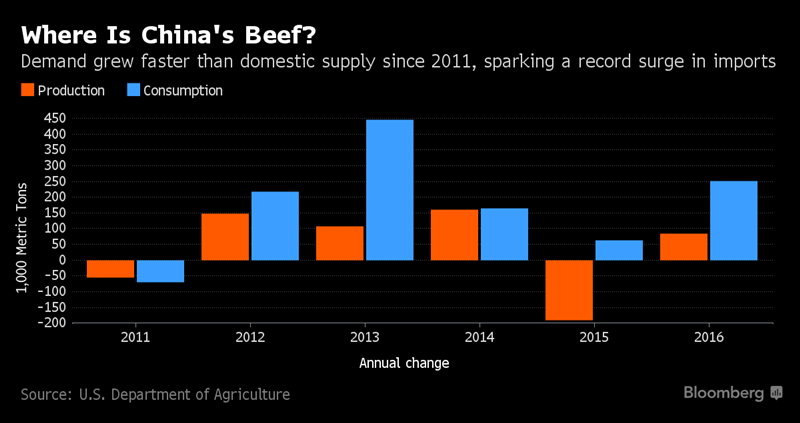Beef Export Bonanza for Brazil as Chinese Eat More Foreign Steak

Chinese consumers are eating more beef than the country can produce, and that’s led to a sales bonanza for exporters in Brazil.
About a year after recovering from a mad-cow scare, Brazil has supplanted Australia as the biggest seller of beef to China, where a production deficit is widening and imports are heading for a record. Brazil’s ample supplies and low prices helped companies including JBS SA, Minerva SA and Marfrig Global Foods SA to boost exports to China by 65 percent in the first half of the year.

While the Chinese eat far more pork than any other meat, consumption per-capita is falling while beef demand rises. Only the U.S. imports more beef than China, where rapid growth over the past decade created the world’s second-largest economy and an expanding middle class that can afford more protein in their diets. At the same time, Brazil has plenty of surplus beef, as domestic demand stagnates, and the country’s exports are appealing to buyers after its currency plunged last year.
“China will have a major impact on the beef trade,” said Miguel Gularte, head of JBS’s Mercosul beef unit. “It’s a fantastic market for Brazil” because the Asian country has “hundreds of millions of people moving to consume red meat,” he said.
Per-capita consumption of beef in China will reach a record 3.864 kilograms (8.5 pounds) this year, compared with 3.029 kilos a decade ago, according to estimates by the Organization for Economic Co-Operation and Development. But production hasn’t kept pace, so imports this year will jump 22 percent to 1.225 million metric tons, including purchases by Hong Kong, U.S. Department of Agriculture data show. That’s an almost fourfold increase from 2012, and imports now account for 36 percent of demand, up from 25 percent last year.
Supplanting Australia
Australia had been China’s top foreign supplier, but its output declined. That created an opportunity for Brazil, where a 33 percent plunge in its currency last year because of a recession and political scandal made its exports more appealing to buyers. Shipments to China and Hong Kong in the first six months of this year were a combined 265,800 tons, up from 161,000 tons a year earlier, industry data show. Total exports to all countries rose 12 percent to 736,000 tons.

"There’s a lot of tailwinds for the Brazilian industry at this moment," Justin Sherrard, an animal-protein global strategist at Rabobank, said in a telephone interview from Utrecht, Netherlands.
Brazil almost missed out. A single positive test for mad-cow disease in 2012 led to import bans by China and other countries, including South Korea and Japan. The case was considered a “negligible risk,” based on criteria established by the World Organization for Animal Health, because the animal never made it into the food chain. That meant a quicker path to lifting the ban, which China did in May 2015.
‘Prime’ Target
While some forms of Brazilian meat are still restricted, like organs or boned meat, China now permits most common meat cuts including steaks and ground beef, though most of the purchases are the low-end cuts used in processed meat products. With most of the so-called premium markets including Japan and South Korea still closed to Brazilian beef, most of the country’s shipments of prime cuts like steaks end up in Europe.
“China is emerging as the first alternative to Europe for Brazil’s premium beef,” Antonio Camardelli, head of Brazil’s beef industry group, Abiec, said in a telephone interview from Sao Paulo. “There’s still a lot of room to increase exports of gourmet beef to China.”

There are signs that demand will slow from China buyers who are “pressuring prices down,” Mercosul’s Gularte said. Still, Brazilian shipments to China this year will be twice what they were in 2015, he said.
Asia represented 26 percent of exports for Minerva in the year ended in March, making it the main destination for Sao Paulo-based company’s exports. That’s up from 18 percent a year before.
“There are consumers that are willing to pay a premium for having a differential,” Fernando Galletti Queiroz, chief executive officer of Minerva SA, said in an interview in Sao Paulo. “The price gap to Europe is shrinking.”







